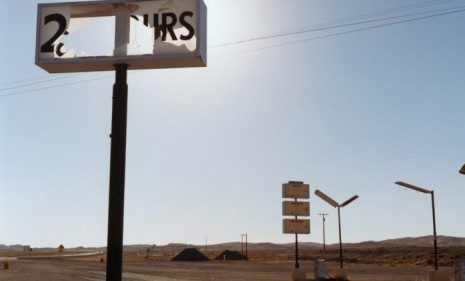The dire state of the states
From California to New York, states are facing monstrous deficits. The forecast calls for pain

Are the states really broke?
Yes. Illinois’ own comptroller admitted it’s “a deadbeat state,” so cash-starved that it has hiked income-tax rates by 66 percent and simply stopped paying the $6 billion it owes to schools, pharmacies, and a host of other creditors. California is fending off vendors with IOUs, and Arizona has sold off its state House and Senate buildings and stopped covering organ transplants for Medicaid patients. Partly as a result of steep cuts in state aid, Camden, N.J., a desperately poor city of 80,000 that’s ranked by CQ Press as the second-most-dangerous city in the country, laid off 167 of its 373 police officers in January. The day the layoffs took effect, laundromat owner Carmelo Villegas pointed across the street to a boarded-up house he said was a drug den. “It’s like giving a license,” he said, “to these crooks to come in and try to take over.”
How did these governments get in this jam?
The Week
Escape your echo chamber. Get the facts behind the news, plus analysis from multiple perspectives.

Sign up for The Week's Free Newsletters
From our morning news briefing to a weekly Good News Newsletter, get the best of The Week delivered directly to your inbox.
From our morning news briefing to a weekly Good News Newsletter, get the best of The Week delivered directly to your inbox.
They sailed into a fiscal perfect storm. Income- and sales-tax receipts plummeted during the Great Recession, and they aren’t improving quickly. This year the National Association of State Budget Officers expects receipts to fall to 6.5 percent below 2008 levels, and it could be five years before they regain that mark. Meanwhile, outlays for Medicaid and unemployment insurance continue to rise. So do pension obligations negotiated in fatter years between politicians and unions keen to keep each other happy. Some $246 billion in federal stimulus funds have helped make up some of the shortfall, but that money will run out at the end of June. “I don’t like to play the scared rabbit,” says investment banker Felix Rohatyn, who steered New York City through a severe budget crisis in the 1970s, “but I just don’t see where the end of this is.”
Which states are hardest hit?
Some of the nation’s biggest. California, Illinois, New Jersey, New York, and Texas are generally agreed to be in the deepest holes; their budget deficits account for half the collective $140 billion in state shortfalls expected this year. But they’re hardly alone. All but 10 states are projected to post deficits this year, and the measures they’re taking to close them—including tax hikes, public-employee layoffs, and cutbacks in aid to cities and towns—may only prolong their misery. “Governments are the biggest employers in the country,” said Jerome Powell of the Bipartisan Policy Center, a Washington think tank. “To have spending cuts and tax increases is going to be a burden on economic growth for several years.”
Who will suffer most?
A free daily email with the biggest news stories of the day – and the best features from TheWeek.com
People who are the most dependent on state government—public employees and the poor. “No one can be shielded from this reality anymore—not policemen, not firefighters, not teachers,” Republican Gov. Chris Christie told a disgruntled cop at a recent town hall meeting in New Jersey. “Don’t be angry at the first guy who told you the truth.” In California, Gov. Jerry Brown has dismayed fellow Democrats by proposing $12.5 billion in spending cuts that will land hardest on state universities, welfare programs, and health care for the poor. But Republicans are no happier with Brown’s proposal to extend hikes in income, sales, and car-registration taxes due to expire this year. New York Gov. Andrew Cuomo, another Democrat, has pledged not to raise taxes, but is proposing steep cuts in Medicaid benefits to the poor, a wage freeze for state workers, and the elimination of some state agencies. Many states are proposing drastic cutbacks in state employee pension systems, which cumulatively have $1 trillion in unfunded obligations.
How does this get resolved?
Not without major pain. A growing number of conservative politicians, notably former House Speaker Newt Gingrich, want to change current federal law to allow states to declare bankruptcy. Bankruptcy, he says, would let states free themselves from the “lucrative pay and benefit packages” secured by government employee unions. But critics of that idea point out that state bankruptcy wouldn’t affect most of the contracts and debt, which are held by transit authorities and other subordinate state agencies. Bankruptcy, moreover, would turn struggling states into financial pariahs. The last state to default on its debt was Arkansas, in 1933. It was unable to build a single road for the next 16 years, and many of its young people moved away. Instead of declaring bankruptcy, governors may demand that unions agree to givebacks in benefits and pensions, or face massive layoffs. Either way, unprecedented cuts in services and personnel are inevitable. The debt crisis in states and cities is “the largest threat to the U.S. economy,” said financial analyst Meredith Whitney, who rose to prominence predicting that subprime mortgages would bring banks to their knees. “It has tentacles as wide as anything I’ve seen.”
Dying beyond their means
The states’ continuing financial crisis is taking a steep toll on schools, statehouses, and police forces. But spare a thought for the dead. From Arizona to Virginia, budget cuts are forcing towns and counties to slash subsidies for burying the indigent. Local coroners have long paid much, if not all, of the cost of burying the poor. But in Wayne County, Mich., which includes Detroit, the coroner’s budget for indigent burials is so inadequate that the county is storing 185 bodies in a vault; some have been there since 2008. Toledo, Ohio, is one of many jurisdictions across the country considering a switch to cremation, which is cheaper than coffin burial, as the default method of interment, unless the deceased’s religion forbids it. The new focus on costs of even this final instance makes some city officials uneasy. “If we believe there is a certain sacredness and sanctity of human life that extends after death,” said Toledo City Councilor Steve Steel, “then what we do when folks can’t afford the increasing costs of a decent interment says a lot.”
-
 Political cartoons for December 15
Political cartoons for December 15Cartoons Monday’s political cartoons include Time's person of the year, naughty and nice list, and more
-
 Who is fuelling the flames of antisemitism in Australia?
Who is fuelling the flames of antisemitism in Australia?Today’s Big Question Deadly Bondi Beach attack the result of ‘permissive environment’ where warning signs were ‘too often left unchecked’
-
 Bulgaria is the latest government to fall amid mass protests
Bulgaria is the latest government to fall amid mass protestsThe Explainer The country’s prime minister resigned as part of the fallout